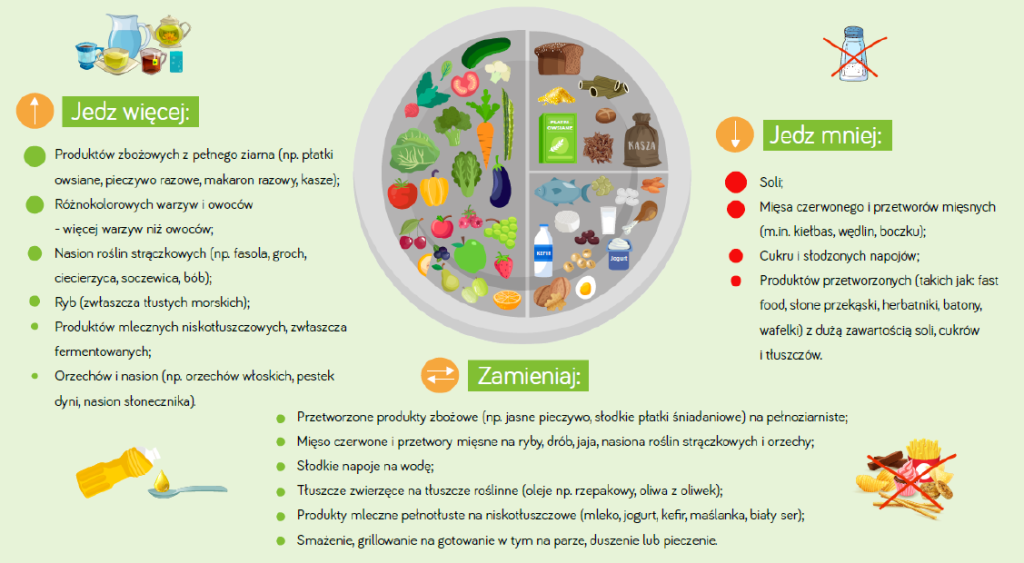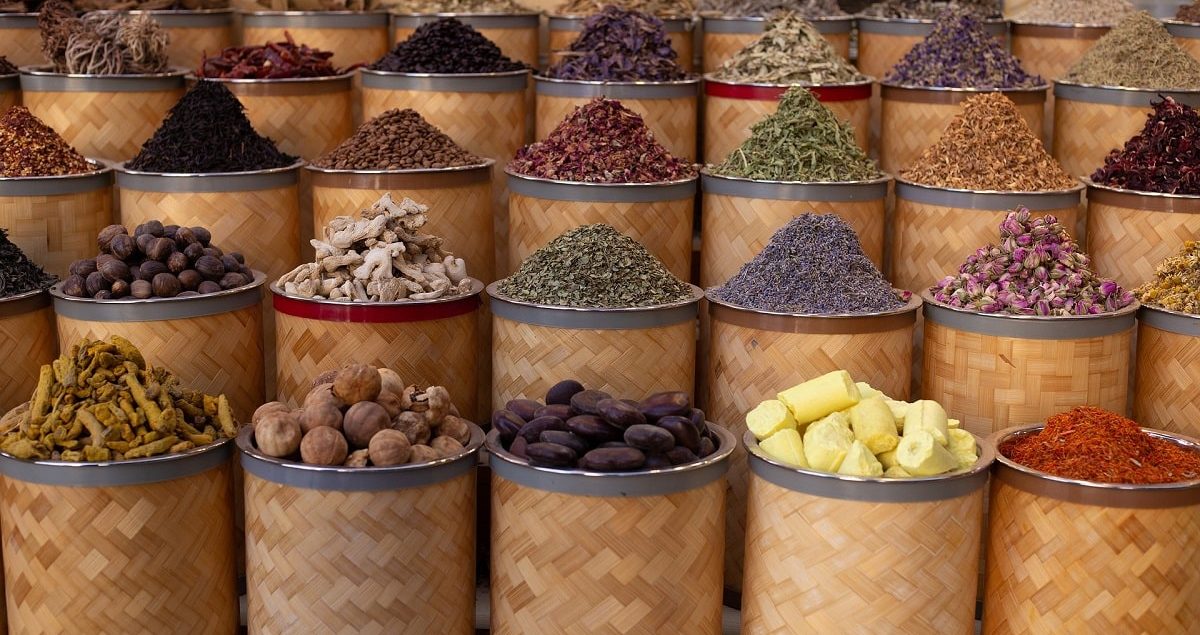Zimowa dieta – co warto wiedzieć
Dietetyk mgr Natalia Parulska
Zima to sezon, który nie rozpieszcza różnorodnością produktów, takich jak chociażby warzywa i owoce. Ten okres sprawia, iż zaczynają kuleć dobre nawyki związane ze spożyciem wody, warzyw, owoców i ogólną różnorodnością posiłków. Często jemy to samo, bo po prostu nie mamy pomysłu na nic innego. Warto jednak i zimą zadbać o urozmaicone posiłki, aby dostarczyć sobie z pożywieniem maksymalnie dużo składników odżywczych.
Zimowa dieta – jakie produkty wybierać ?
Zwróćmy uwagę na mrożonki i warzywa w formie kiszonej. W swoim jadłospisie wykorzystujmy nie tylko kiszoną kapustę lub ogórki. Możemy zakisić praktycznie każde warzywo, propozycją na zimowe kiszenie może być burak. Z uwagi na znaczną ilość soli, kiszonki powinny być używane w ograniczonych ilościach przez osoby z nadciśnieniem tętniczym.
Dbajmy o odpowiednie zbilansowanie jadłospisu, starając się używać produkty ze wszystkich grup: różnokolorowe warzywa, w mniejszym stopniu owoce, produkty zbożowe (zwłaszcza z pełnych ziaren, np. kasze, płatki owsiane, pełnoziarnisty makaron, razowe pieczywo), chude mięso, ryby (zwłaszcza tłuste), niskotłuszczowy, niedosładzany nabiał, jajka, nasiona strączkowe (fasola, soja, soczewica, ciecierzyca), tłuszcze pochodzenia roślinnego (oleje, nasiona słonecznika, pestki dyni, orzechy włoskie, laskowe, migdały).
Można wzbogacić jadłospis o przyprawy wykazujące właściwości przeciwzapalne, przeciwwirusowe, przeciwgrzybicze, przeciwbakteryjne lub po prostu rozgrzewające nasz organizm. Do tego grona zaliczymy kurkumę, imbir, cynamon, gałkę muszkatołową, pieprz, goździki, kardamon, anyż, oregano, czarnuszkę, ale również nasz pospolity chrzan i czosnek.
Zimą, z uwagi na niską temperaturę za oknem możemy zwiększyć częstotliwość ciepłych posiłków w ciągu dnia. Zwykle zjadamy ciepły obiad, ale przyjemnym początkiem dnia może być ciepłe pierwsze śniadanie w postaci, np. owsianki, jajka na miękko lub omletu.
Planując posiłki możemy wzorować się na talerzu:

Jak jeść, by nie przytyć?
Przy zimowej diecie ważne jest utrzymanie prawidłowej masy ciała. Jeśli Twój wskaźnik masy ciała BMI (Body Mass Index) przekracza 25 kg/m2 w pierwszej kolejności wyeliminuj ze swojego jadłospisu puste kalorie, czyli produkty, które dostarczają znacznej ilości energii nie wnosząc prawie żadnych wartości odżywczych:
- wszelkiego rodzaju słodycze – ciasta, ciastka, batony, cukierki, żelki itp.,
- chipsy, chrupki, paluszki, słone orzeszki i inne przekąski tego rodzaju, uważaj też na pozornie „lekkie” przekąski – wafle ryżowe, podpłomyki, sucharki, andruty,
- napoje gazowane, napoje owocowe niegazowane, nektary, ice tea, wody smakowe, napoje energetyczne, alkohol,
- cukier dodany do dosładzania napojów i jego inne formy, np. cukier brązowy, syropy owocowe, miód,
- słodkie płatki śniadaniowe, kupne granole i musli typu crunch,
- dosładzany nabiał (smakowe jogurty, serki homogenizowane, mleka smakowe…),
- żywność fast-food i smażone na głębokim tłuszczu, np. frytki, kotlety w panierkach,
- potrawy mączne, np. kluski ziemniaczane, knedle, kopytka.
Jak obliczyć BMI?

Dieta w czasie infekcji i talerz seniora
Jeśli wśród naszych domowników znajdują się osoby w podeszłym wieku, zadbajmy o to, aby ich jadłospis był urozmaicony. O to, żeby nie brakowało w nim przede wszystkim pełnowartościowego białka – pochodzącego z jaj, chudego mięsa, ryb lub niskotłuszczowego nabiału. Zdarza się, że osoby starsze celowo eliminują źródła białka z uwagi na trudności z gryzieniem lub przełykaniem potraw. Z wiekiem może się też nasilić dyskomfort po spożyciu nabiału. Starajmy się ułatwić przyjmowanie produktów bogatobiałkowych rozdrabniając mięso przed obróbką (przygotowując np. pulpet z mięsa mielonego) lub kupując bezlaktozowy nabiał.
Jeśli chcemy podnieść kaloryczność posiłku nie zwiększając jednocześnie jego objętości (brak apetytu) możemy wykorzystać orzechy w formie zmielonej, które można dosypać do owsianki lub jogurtu.
Zadbajmy o to, aby potrawy zachęcały do jedzenia, tzn. zostały podane w estetyczny, przyjemny dla oka sposób. Warto wspierać się kolorem, używać różnobarwnych warzyw i owoców, świeżo wyciskanych soków – każdy kolor będzie dostarczał różnych składników odżywczych, np. pomarańczowy – karotenoidy, fioletowy – antocyjany, zielony – foliany, czerwony – likopen.
Tę samą strategię powinniśmy przyjąć w czasie infekcji przebiegającej z osłabieniem apetytu, utratą węchu i/lub smaku.

